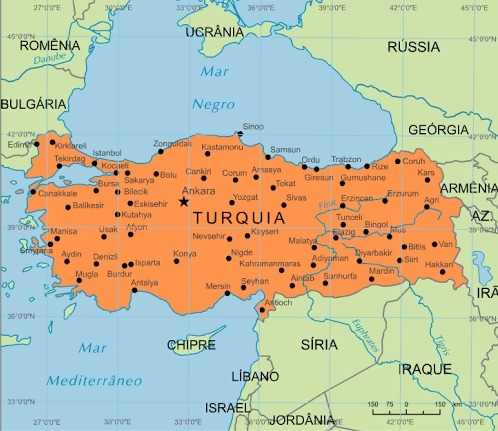The relief dynamically goes through successive processes of formation and transformation. Such an occurrence is operationalized by several factors, which are called relief transforming agents. These agents are subdivided into those that manifest themselves internally and those that manifest themselves externally. In this text, the objective is to explain the functioning of the first ones, the endogenous relief transformation agents.
Endogenous agents, also called internal agents, are those that act below the surface or that come from internal phenomena. In this category, we can mention tectonism, volcanism and earthquakes. In a way, all these natural phenomena are interconnected and, in general, make up the same chain of events.
O tectonism refers to all processes associated with the movement of tectonic plates. This factor is responsible for the emergence of different forms of relief, notably the mountain ranges that arise from the collision between two plates distinct, in which the heavier one sinks into the magma and the lighter one remains ascending, with its surface “wrinkling” and the formation of reliefs accidents.
Examples of reliefs formed by tectonism: Andes Mountains (South America), Himalayas (Asia) and Rocky Mountains (North America).
O volcanism, one might say, is one of the direct consequences of the actions of tectonism. The presence of volcanoes almost always occurs at meeting points between two or more plates, in areas where activities magmatics are more intense and generate greater pressure on the earth's crust, where volcanic activities form. Volcanism transforms the relief when the lava it expels, along with some solid materials (pyroclasts), is solidified on the surface, forming volcanic igneous rocks, such as the basalt.
Do not stop now... There's more after the advertising ;)

Lava turning into rocks
already the earthquakes – again a consequence of tectonism – they occur in the face of geological stress relief, in which contact points between tectonic plates generate zones of geological tension, where energy accumulates for a long time, causing part of it to be abruptly released and earthquakes occur. Another factor that contributes to the occurrence of earthquakes are geological faults, which cause the terrain to become unstable.
All these factors, as we have already mentioned, are interconnected with each other. In some cases, actions of volcanoes can trigger earthquakes, and also earthquakes can intensify volcanic activity. And all of this is linked to the movement of Earth magma convection cells, in which the mantle moves in circular shapes and presses on the earth's crust, causing all the actions listed above.
By Me. Rodolfo Alves Pena
Would you like to reference this text in a school or academic work? Look:
PENA, Rodolfo F. Alves. "Endogenous agents of relief transformation"; Brazil School. Available in: https://brasilescola.uol.com.br/geografia/agentes-endogenos-transformacao-relevo.htm. Accessed on June 27, 2021.



